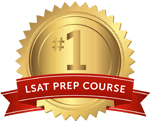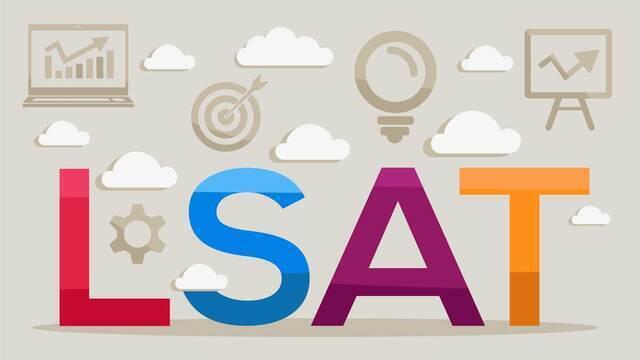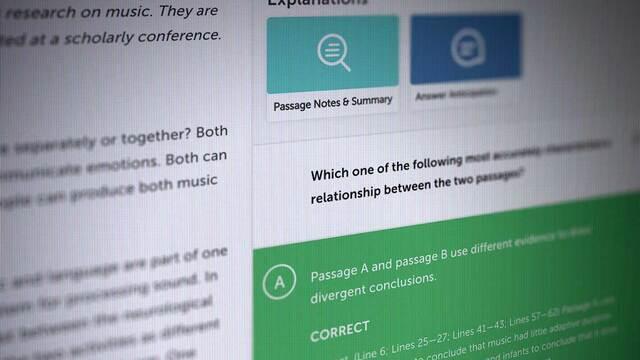As if the LSAT wasn’t changing enough in 2024, the sneaky petes at LSAC announced one more change to test: the format of the LSAT Writing section will change in July 2024. LSAC sent us a pretty long email about it, so let’s break it down in plain language.
How is the LSAT Writing section changing?
Before, the LSAT Writing section would provide a prompt that describes a hypothetical, totally made-up situation. It would lay out two mutually exclusive options. It would provide two criteria that you will consider when making your argument. The prompt will then relate some pros and cons of each option. You would then have 35 minutes to write a short essay arguing in favor of one of the two options.
Starting in July 2024, the LSAT Writing section will still provide a prompt that describes a slightly less hypothetical, less made-up situation. (The example prompt LSAC released is about the purpose of a liberal arts education, a totally real debate happening in our world.) Instead of two clear options, the prompt will lay outa more open-ended question. And instead of facts that present pros and cons of each option, the prompt will present a few different perspectives that respond to that question.
The most striking deviation, however, comes in how they expect you to construct your essay. The directions say your “essay must directly address ideas from one or more of the perspectives presented.” However, you don’t need to bring up every perspective. And you’re explicitly told to incorporate your own knowledge, experiences, and values into your argument. So, instead of basing your argument around just the made-up facts provided, you get to bring up your own thoughts and feelings about the subject matter.
Oh, and you also get 50 minutes to do this rather than just 35. Once you start the new Writing section, you’ll have 15 minutes to read the promptand outline your thoughts on the digital scratch paper. Then, you’ll have 35 minutes to write the essay.
This sounds a little confusing … Can I just see an example?
Sure. LSAC included the example prompt on its website. If you want to try writing the essay, the same prompt is on LawHub.
We’re just going to repeat the prompt here:
Purpose of College
The principal aim of an undergraduate liberal arts education has traditionally been to cultivate a student’s understanding of a broad range of important areas of knowledge, from the fine arts to the sciences, philosophy, language, economics—these things have been seen as crucial to understanding, and participating in, the larger world beyond the classroom. Some, however, believe that this kind of education has failed to provide students with the practical skills necessary to succeed in an increasingly competitive and career-focused society, suggesting we need to reconsider what university programs should look like. Such proposals are often framed as a pragmatic response to trends in the economy and predictions about the skills, knowledge, and training that will best serve students’ career readiness. Given this proposed shift in emphasis toward skills-based education, it’s worth considering what the overall goal of an undergraduate education should be.
KEY QUESTION: To what extent do colleges and universities serve their students’ best interests when they emphasize career preparation?
Read and carefully consider the following perspectives. Each suggests a particular way of thinking about the issue captured in the Key Question.
Perspective 1 — an excerpt from a career advice blog
“Recruiting talent for a variety of organizations across industries, I’ve witnessed how the demands of today’s job market make the cultivation of practical skills and specialized training more important than ever. If a student’s time at university is an investment that ought to prepare them for the future, then surely career readiness must factor highly into what such institutions aim to provide. Schools that recognize this and adapt will produce graduates who are better equipped to explore a wide array of career paths, and who can adapt to changing job roles within ever-evolving industries. That’s the way for today’s student to make a meaningful contribution to society—by being well-equipped to grow and change within an economic reality that is itself always growing and changing.”
Perspective 2 — an excerpt from a university’s promotional brochure
“In college, I began making my way through this world and crafting a life for myself that reflects my values. But what are my values, and how did I come to hold these values rather than others? Once I realized I didn’t have to unquestioningly accept the norms and values that had been given to me, I was free to decide for myself which values I wanted to hold on to, which to leave behind, and even which new values I felt drawn to. College provided the context in which I could reflect on my values, the reasons and evidence for them, and whether they are the right values for me. Would my classmates and I have been able to test out our ideas and ideals so effectively if my university was only focused on practical career skills? I don’t believe so—such work requires a dedicated exploration of ideas and knowledge for their own sake.”
Perspective 3 — an excerpt from a textbook on the sociology of education
“Across cultures, higher education has served primarily to aid the process of socialization by instilling cultural values, norms, and behaviors, thereby integrating people into the fabric of their respective societies. A university degree provides more than just those so-called ‘soft’ skills necessary for making white-collar work function smoothly, like interpersonal communication and teamwork. This emblem of accomplishment, the college degree, also provides a social signal that one is befitted to the upper-middle class, if not higher. By serving as class membership badges, undergraduate degrees perpetuate social stratification and hierarchies, with the result that access to opportunity is determined largely not by merit, but more so by one’s ability to conform to a particular set of values—in short, to ‘fit in.’ In this manner, college places subtle constraints on students that go far beyond the more well-known problem of financial barriers to access.”
Perspective 4 — an excerpt from a journal on higher education
“The traditional structure of higher education needs a transformative overhaul. The modern university has its origins in medieval schools, which stressed rote memorization and obedience to the centralized authority of teachers, reflecting the broader civic and political context of those schools. But in today’s world, we don’t accept such a rigid, top-down system in our civic and political life. We expect citizens to be agents in the evolution of their communities.
Likewise, there’s no reason to accept it in our educational lives. Instead, we ought to honor the agency of students in orchestrating their own educational experience. Some colleges have begun to change in the right direction, emphasizing dialogue over monologue and problem-solving over sheer information retention. This new form of relationship between student and university is critical, where teachers collaborate with students to discover new truths together, where student learning is based on their own guided learning experiences, and where curricula are created around topics that engage students’ intrinsic motivation to learn. This moves us closer to creating the flourishing, diverse society we need.”
Prewriting Analysis: Generating Ideas for Your Argumentative Essay
Spend the remainder of your prewriting time working through the prewriting questions presented below. These questions are intended to help you think critically about the issue and generate productive ideas for your essay. Record your thoughts in your digital scratch paper by making notes or lists, or by writing short answers to the questions.
Your notes in response to the prewriting questions will still be available to you while you write your essay, but they will not be evaluated or included as part of your essay. These questions are strictly provided to help guide your analysis of the perspectives and to help you develop your own argument in response to the Key Question.
Prewriting Questions
- Which perspective(s) do you find most compelling?
- What relevant insights do you see in the perspective(s)?
- What principles or values do you see at work in the perspective(s)?
- What strengths and weaknesses can you find in the perspective(s)?
Your argument should incorporate or address ideas from at least one of the perspectives provided. In addition, your own knowledge, experiences, and personal values can be valid sources of evidence, and you can include these in your essay:
- What knowledge do you already have about this issue? Consider information you have read or heard, including things you’ve learned at home or school, etc.
- What values influence your position on this issue? Consider your worldview or belief system, as well as any guiding principles or convictions you hold.
- What experiences do you have that might be relevant to this issue? Consider any personal experience you might have with this or similar issues, or other relevant lessons learned from your own life.
YOUR TASK: Write an argumentative essay in response to the Key Question.
The various perspectives are presented to provide additional context for the issue and to give you ideas that you can react to or incorporate into your argument as you develop it. They also serve as a model for the types of arguments that various stakeholders are making as they debate the issue raised in the Key Question.
Your essay must directly address ideas from one or more of the perspectives presented in the task. You do not need to address each of the perspectives—use your own judgment in deciding which ideas to address (and how many), based on what you believe will be most effective for developing your argument.
Use the ideas generated during your prewriting analysis to help you create and develop your argument as you see fit. You may incorporate any knowledge or experiences you might have regarding this issue, your own values, and your critical evaluation of the arguments and ideas contained in the other perspectives. Your position may be in full agreement with any of the perspectives, in partial agreement, or completely different. Whatever the case, your position should be supported with logical arguments and detailed, persuasive examples.
According to LSAC’s website, here’s what they’re looking for in the response:
- A clear thesis statement
- Support in favor of your thesis
- Acknowledgement of potential counterarguments to your thesis
- A clear and logical organization
- Clear language
So, how should I write this thing?
There wasn’t one correct approach to the original Writing section, and there isn’t one correct approach to this one, either. That said, some guidelines and guardrails might be helpful, especially with a more open-ended version of the prompt. As more of these example prompts are released, we may alter or refine our recommended approach. But here’s how we’d recommend approaching the section.
Step 1: Read the prompt, write out the key question, and pick a perspective
When reading the prompt, write down the key question on your scratch paper. Having that bolded at the top of your scratch paper will help focus your reading. They’ll throw a lot of information at you, so having a visible reminder of the key question will help remind you to analyze the information through that lens.
After reading the four perspectives, pick one. This will be the perspective you explicitly address in your thesis statement. You can choose the perspective you agree with most emphatically. You can choose the perspective you disagree with most vehemently. Or, you can choose the prompt that you think has the most meat on its bones — the one that brings up the issues you find most interesting.
For us, we’d pick “Perspective 2” — the one from the school’s brochure. It seems to most directly relate to the key question, and we rather like the vision of college as a place of intellectual and ideological self-discovery. We also think that vision is a little pie-in-the-sky, and we think we can poke some holes in it.
Step 2: Analyze the perspective
After you pick your perspective, write out how it addresses some of the provided “Prewriting Questions.” You’ve already picked the one you find “most compelling.” So, now write out what “insights” you see in that perspective, what “principles or values” you see in that perspective, and what “strengths and weaknesses” you see in that perspective.
Here’s how we’d analyze Perspective 2:
-
Insights:
- College as a place for intellectual and ideological self-discovery
- Can learn and experience new ways of thinking and new beliefs
- Can learn to examine received beliefs critically
-
Principles/Values:
- Self-determination (right to develop your own beliefs)
- Democratic values (Exposure to multiple points of view)
- Intellectualism (exploring ideas and knowledge for their own sake)
-
Strengths:
-
Self-discovery can help students make more informed and satisfying life decisions, including career decisions
-
-
Weaknesses:
- Is this just marketing?
- Why does this need to take place in college?
- Are students only replacing one set of received values (from parents/community) for another (from professors/peers)?
- Is this worth the rising cost of an undergraduate education?
- Can one develop their own values while also emphasizing career preparation?
Step 3: Write your thesis statement
Your thesis statement should do two things: (1) address the key question and (2) bring up your chosen perspective.
We can start by considering how your chosen perspective would answer the key question. Our chosen perspective would pretty clearly disagree with the key statement. They’d say that focusing on career preparation does not serve students’ best interests since it’d get in the way of students’ ability to interrogate and acquire their value system.
The easiest way to write the essay would be just adopting that perspective and arguing in favor of it. You’re certainly welcome to do that. If you find it difficult to complete a short essay in 35 minutes, this is probably your best move.
That said, if it was easier to find weaknesses with this perspective in Step 2, you probably want to argue against it in your thesis statement. You can instead argue that your perspective is incorrect. This is probably the second-easiest approach to this Writing section.
Or, you can acknowledge that your perspective is correct in some ways but incorrect in others. This nuanced approach is certainly the most difficult thesis statement to construct and defend, but it can make you look like a level-headed deep thinker. Because we’re gluttons for punishment, we’ll use this approach for our example:
“A liberal arts education can increase its focus on career preparation without preventing students from determining their own value systems, provided the liberal arts education attempts to develop a set of broad, multidisciplinary skills that will help students become both productive members of the workforce and democratic society.”
Step 4: Outline your essay
To write this thing, we’ll be using that old war horse for simple writing assignments: the five-paragraph format. Here’s our recommended outline:
-
Paragraph 1: State the background information and your thesis statement.
- Take background information from the first part of the prompt (“Purpose of College,” in this example prompt)
- State thesis statement
-
Paragraph 2: Describe your chosen perspective
- How would they answer the key question?
- What values and insights do they offer?
- Does this perspective align with your own experiences?
- What would other perspectives say about this claim?
-
Paragraph 3: Acknowledge the weaknesses of this perspective (if your thesis agrees with it)/Acknowledge the strengths of this perspective (if your thesis disagrees with it)
- Use the strengths/weakness section from your analysis
- Does this strength/weakness align with your own experiences or values?
- Does this strength/weakness align with the beliefs held by another perspective?
- Make sure this is shorter than Paragraph 4
-
Paragraph 4: Argue in favor of this perspective (if your thesis agrees with it)/Argue against this perspective (if your thesis disagrees with it)
- Use the strengths/weakness section from your analysis
- Does this strength/weakness align with your own experiences or values?
- Does this strength/weakness align with the beliefs held by another perspective?
- Make sure this is longer than Paragraph 3
-
Paragraph 5: Repeat your thesis statement with different words
Step 5: Write the essay
Finally, we got to write the thing. Keep it short — 5-7 sentences per paragraph. And keep the language simple. If you’re even the slightest bit unsure whether you’re using a word correctly, find a different word.
Here’s the essay we’d write:
The undergraduate liberal arts education has traditionally attempted to broaden students’ minds by exposing them to various academic topics and a broad range of viewpoints. Some critics have questioned whether this traditional approach comes at the expense of providing students with the practical skills needed in a competitive and rapidly evolving job market. Conversely, some students worry that a focus on career preparation will prevent them from analyzing their received values and building a new value system in college, as evidenced by students’ statements in a university’s promotional brochure. However, I believe that a liberal arts education can increase its focus on career preparation without preventing students from determining their own value systems, provided the liberal arts education attempts to develop a set of broad, multidisciplinary skills that will help students become both productive members of the workforce and democratic society.
According to a promotional brochure, some students argue that the college experience is a time when they realize they don’t need to “unquestioningly accept the norms and values” they had received from their parents or communities. Instead, they began questioning their received values and deciding whether they were right for their adult lives. These students clearly value self-determination — their right to develop their own beliefs — and the democratic and intellectual project of college. They see college as a crucial opportunity to advance these values. Importantly, these students also believe a focus on career preparation would impede college’s ability to promote these values.
This perspective is not without merit. After all, this process of self-discovery can help students make more informed and satisfying life decisions, including career decisions. A focus purely on career preparation — without a reflection on whether this career aligns with the student’s personal ethics — might result in students pursuing careers they find unsatisfying or even antithetical to their beliefs. In my experience, an undergraduate education certainly helped me adopt a more global perspective on my actions and belief systems, which informed my decision to pursue law school and international law. Worse still, learning career skills without reflecting on the values of that career might result in some students accepting “a rigid, top-down system in our civic and political life,” which a journal on higher education argues is inappropriate for today’s world.
Ultimately, however, the rising cost of an undergraduate education requires colleges to be more than a place where students determine their values. Students graduate from college sometimes with hundreds of thousands of dollars of debt, and they need skills that will help them pursue satisfying and remunerative careers commensurate to that financial commitment. Rather than simply focusing on practical skills, colleges should help their students develop multidisciplinary skills that will help students become both productive members of the workforce and determine their values. Skills like media literacy, technological fluency, and verbal and written communication can help students excel in a broad range of jobs in an ever-changing marketplace. But this won’t come at the expense of students’ right to determine their own value systems. For instance, media literacy can help students analyze whether they’ve received false or misleading information about their received beliefs, and verbal and written communication skills can help them interrogate and question those beliefs. These skills will also help them debate and contribute to a democratic society. Instead of simply “serving as class membership badges” that “perpetuate social stratification and hierarchies,” as some sociologists argue, undergraduate degrees will help students participate in civic life as skilled and knowledgeable members of society.
Therefore, increasing an undergraduate liberal arts education’s focus on career preparation can benefit students’ career and civil prospects, as long as the education promotes broad, multidisciplinary skills such as media literacy, technological fluency, and verbal and written communication.
Step 6: Proofread
Check for spelling and grammar, and you’re done!
Wait, so I have to talk about my life in this thing? What if I don’t know anything about the topic?
Don’t worry about that. LSAC isn’t in the business of making a test that discriminates large percentages of test-takers. (Well, some would argue that it’s very much in that business, but that’s not LSAC’s mission statement, at least.) At any rate, LSAC is an institution that’s full of lawyers — they know a legal liability when they see one. They’re not going to make a prompt about a topic that’s completely foreign to many test-takers. That would be obviously unfair to those test-takers and open LSAC to lawsuits, an experience they surely do not want to go through again.
It’s telling that the released prompt is about undergraduate education, a topic on which basically everyone sitting for the LSAT has first-hand experience. Expect future prompts to be similarly universal. So, don’t worry about your prompt being about whether caviar should taste buttery and rich or sharp and briny or anything like that.
Is anything staying the same?
Yeah. The Writing section will continue to be unscored. The email released to us suggests that might change in 2025 — which will open up a whole new can of worms. (More on this below.) But until at least June 2025, the Writing section won’t count toward your LSAT score.
Additionally, LSAC’s website still says that you only need one writing sample on file “for their LSAT to be considered complete” and receive your LSAT score. So, you don’t need to complete the new Writing section if you already have an approved submission from the old Writing section on file.
You’ll also continue to take the Writing section remotely, starting eight days before your LSAT administration begins. You’ll still have to follow the Byzantine rules and regulations. Accommodations continue to be available to qualifying test-takers.
Why are they making this change?
The long-ish email LSAC released to us cited a few different factors. LSAC says law schools wanted a more challenging, open-ended prompt to better “understand the writing capabilities of applicants for the purposes of their admission decisions” and to assess the need for “writing support for students who need to strengthen their writing skills so they are better prepared for bar passage, finding employment, and practice.”
Which, like, sure, that sounds reasonable enough. But law schools don’t consider their applicants’ LSAT Writing submissions a determining factor when evaluating applications. In fact, it would be unreasonable to put that much weight on an essay written in 35 minutes on a hypothetical topic, even if that topic is slightly less hypothetical in this new version of the Writing section. Presumably, applicants’ personal statements and undergraduate GPA do a much better job of illustrating these skills. And the idea that law schools would adjust their curriculum based on these LSAT Writing section submissions is, frankly, preposterous.
Instead, we think LSAC buried the lede in this email. Here’s what they said in the second-to-last paragraph:
“For the 2024-2025 testing cycle, LSAT Writing will remain an unscored part of the LSAT. Over the course of the 2024-2025 testing cycle, we will be analyzing data on the new LSAT Writing prompt to assess its validity and reliability with a long-term goal of providing a scored LSAT Writing assessment that schools may use in their holistic admission processes.”
We think this is the real reason they’re introducing the new section. They want to start experimenting to see if they can introduce a new, scored Writing section of the LSAT. That, of course, would represent a major change to how the LSAT is scored.
But don’t expect this change to come anytime soon. The LSAT is a slow-moving dinosaur — it took them five years just to decide to take out one section and replace it with an existing one. So, any changes to the way the LSAT is scored are surely years away.
For now, you’ll need to just make sure you get an LSAT Writing submission approved by LSAC so you can get your far more important actual LSAT score back.







